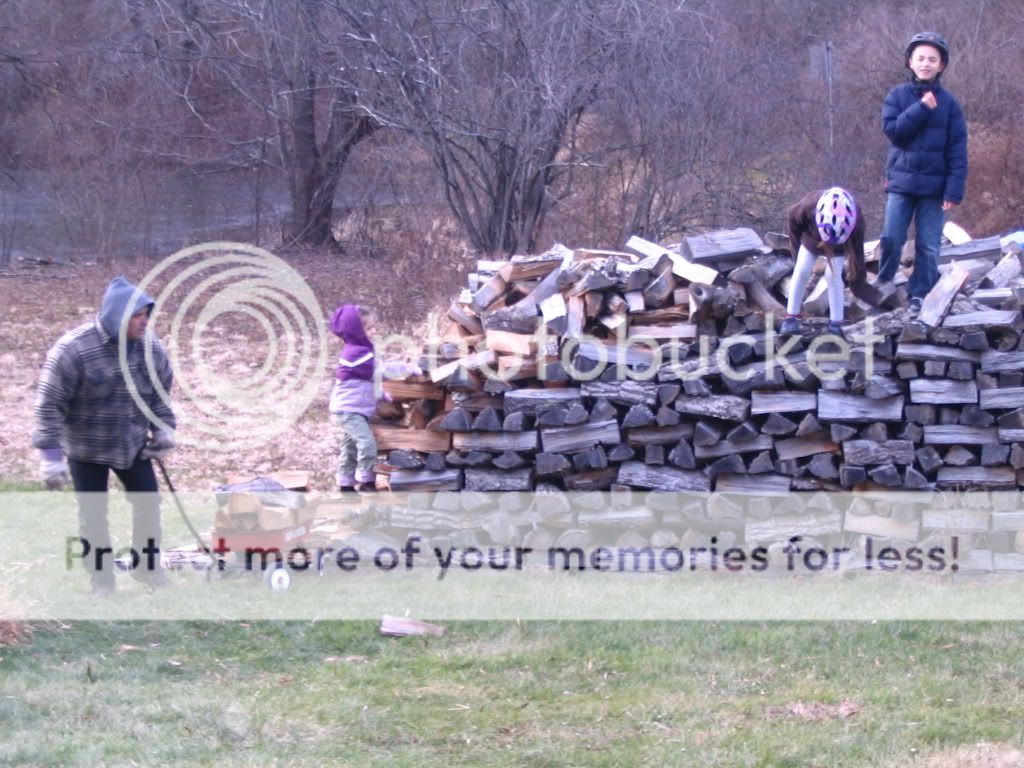leonardo
Member
2 rows deep on pallets. uncovered. positioned north to south to take advantage of prevailing westerly winds here in ohio. at 10-13 months my customers like the dryness i achieve.
LLigetfa said:4 deep will slow the drying some. Single rows give best results but some folk do 2 or 3 rows on pallets depending on split length. I do 2 rows on pallets. Later when I move it into the woodshed, I pack them in like sardines.
NorthEast Allnighter said:Im burning it in an Allnighter Big Moe. Its in the basement of an 1150 sq ft Cape Cod style home. It is working quite well, it doesnt heat the 2nd floor very well which doesnt matter since no one lives up there. Ive actually blocked off the upstairs stair case to keep more heat on the 1st floor. I have already gone through about 4 cord already this year. so i will definitly go through the maple and have to start on the oak next year.
Blue Vomit said:leave it uncovered? even stacking that tight? I'm always afraid if that wood in the middle gets wet it will take forever to dry. I dont have a great spot, not alot of wind or sun.
edit: i meant the 6 rows stacked tight.
CTYank said:Blue Vomit said:leave it uncovered? even stacking that tight? I'm always afraid if that wood in the middle gets wet it will take forever to dry. I dont have a great spot, not alot of wind or sun.
edit: i meant the 6 rows stacked tight.
Moisture that can be driven out, can just as easily be driven back in. There's no check-valve there.
NorthEast Allnighter said:The basement is not insulated, concrete walls. I just moved in last year so everything is still a project. One of the next ones will be to finish the basement which will be insulated. Im wondering if I should load up on maple and other types of wood besides oak and c/s/s it by spring so it will be ready by winter. then i could leave all the oak i have to season for an extra year.
NorthEast Allnighter said:Im burning it in an Allnighter Big Moe.

NorthEast Allnighter said:Hello All,
First time poster, first season burning. I have been doing reasearch on the site for months now, helping me answer many of my questions. I do have a question I was unable to find though, and im sure someone will easily be able to answer.
I just bought my house this year, early early spring i had scrounged about 5 cord of blow downs and felled some standing dead. all was c/s/s by april. Most of which i am burning now and has been burning quite well. however, ive already c/s/s about 8.5 cord for 2012-2013. all maple with some oak. it is stacked 4 rows deep and there is no real space in between rows. i am wondering if having it 4 rows deep will hinder the drying process and make it not seasoned well enough for next winter. the front and back of the stack is wide open in an open area.
From what i have gathered in other posts, oak should be seasoned 2 years. im going to really concentrate on taking the tarp off during the hot dry weeks of summer and covering it when it rains to help season a little quicker in an effort to be able to use it next year. i really dont have a choice. however, i already have a few loads of bucked oak for 2013 2014 season which will get its 2 year seasoning thats needed.
/////////// I live in north central CT, colder winters, hot summers///////////////
Thanks for all the help....
Dave
I will be burning the wood next season (2012-2013)...so im hoping the 14 months will be sufficient with it being stacked the way it is. june-august is our hottest months…reaching 90s with the occasional 100 degree day.


 It is not just those outside rows that shrink down to 4' high. The center rows shrink at the same rate as the outside rows! So how can they be losing moisture at a lesser rate? It appears to me that the moisture is about the same in all the rows. The same thing happens if we stack 10 rows deep. Those center rows seem to dry just fine.
It is not just those outside rows that shrink down to 4' high. The center rows shrink at the same rate as the outside rows! So how can they be losing moisture at a lesser rate? It appears to me that the moisture is about the same in all the rows. The same thing happens if we stack 10 rows deep. Those center rows seem to dry just fine. Little Red Wagon, C'mon premium firewood hauler :coolsmile:mecreature said:Ironworker might want to get a bigger wagon. :zip:
NorthEast Allnighter said:The basement is not insulated, concrete walls. I just moved in last year so everything is still a project. One of the next ones will be to finish the basement which will be insulated. Im wondering if I should load up on maple and other types of wood besides oak and c/s/s it by spring so it will be ready by winter. then i could leave all the oak i have to season for an extra year.

